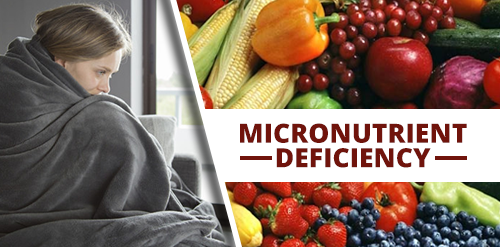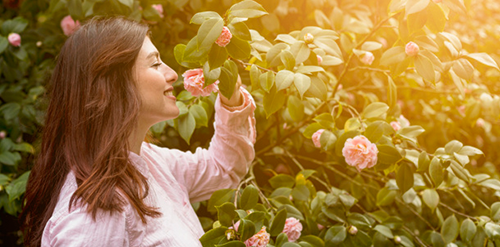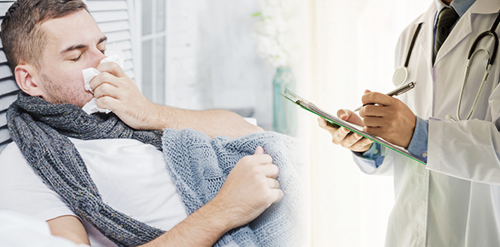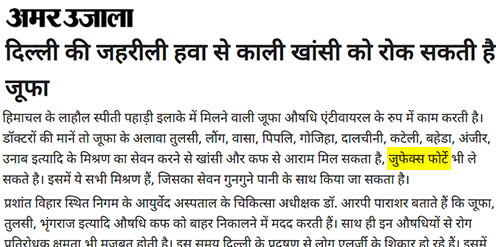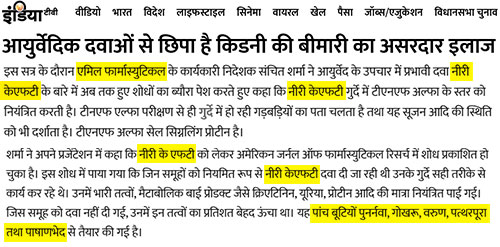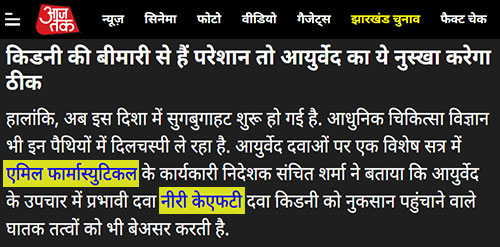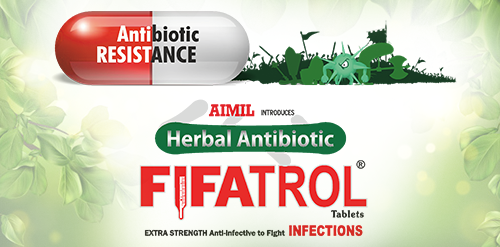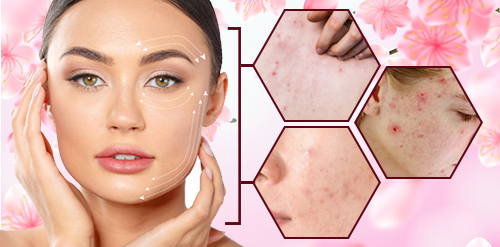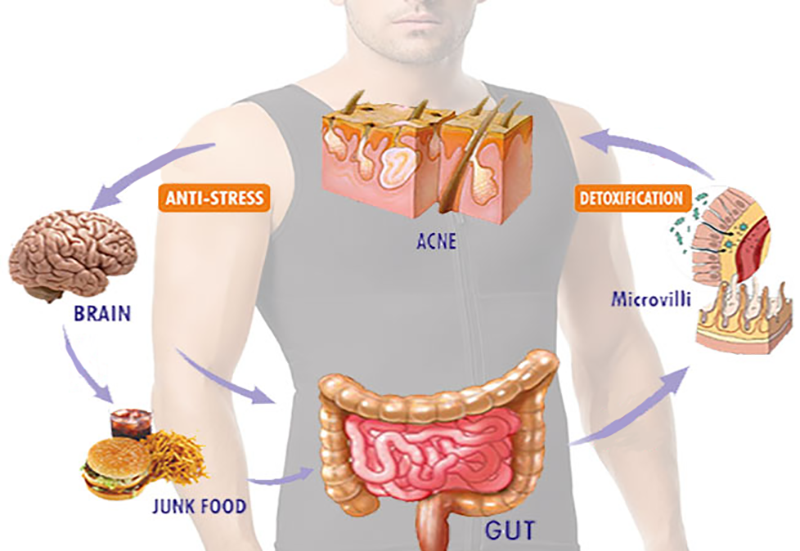The word "hair" usually refers to two distinct structures. The part beneath the skin, called the hair follicle, or, when pulled from the skin, the bulb. This organ is located in the dermis and maintains stem cells, which not only re-grow the hair after it falls out, but also are recruited to regrow skin after a wound; and the shaft, which is the hard filamentous part that extends above the skin surface. Hair loss is a common concern for many men and women. There are many reasons your hair may fall out, from genetics and vitamin deficiencies, to hormone changes. Some medical conditions, such as thyroid disease, may also cause hair to thin or fall out. There is no magic bullet for growing hair, but research has shown some herbs may slow hair loss or help promote new growth. Herbs rely on the natural components stored inside to promote healthy hair and scalp, rather than the synthetic ingredients and chemicals that can damage hair and cause build-up. Hence fore herbs and herbal infusions have been used for centuries to naturally soften hair, increase manageability, and restore luster, body, and bounce of hairs. Some of the herbs which have frequently been used for making hairs healthy and strengthening them are given bellow.
Bhringraj (Eclipta alba (L.) Hassk.) Bhringraj is an ancient Ayurvedic herbal remedy for hair loss, premature greying and skin allergies, which helps rejuvenate skin and hair. Considered the "king of herbs" for hair growth, it adds deep moisture and acts like a multivitamin for hair to help strengthen the hair shaft, provide natural shine and may also help with dandruff. Recent research findings suggest that methanol extract of Eclipta alba may have potential as a hair growth promoter.
Mehdi / Henna (Lawsonia inermis L.). The powdered leaves of mehdi have been used since ancient times as a natural dye. Henna gives hair a reddish tint and, when mixed with other botanicals such as indigo and cassia, can create a variety of beautiful warm colours. Henna, a deep conditioner, coats the hair shaft, seals in moisture, tightens the cuticle, increases body and lustre and makes hair silky soft.
Shikakai (Acacia concinna DC.). Shikakai is referred to as "fruit for the hair." It has a naturally mild pH, and it gently cleans hair and increases bounciness and silkiness of hair without stripping it of natural oils. As a natural hair conditioner, Shikakai is said to promote hair growth, strengthen hair roots and clear dandruff.
Rosemary (Rosemarinus officinalis L. ), Rosemary encourages hair growth by improving blood flow to the scalp, encourages strong, healthy hair, stimulates growth, increases manageability and adds shine. The stimulating and revitalizing properties of Rosemary help condition both hair and scalp. It has the added bonus of stopping premature greying of hairs as well. It is also super moisturizing so it can be used to treat a dry, flaky scalp which may stand in the way of new growth occurring. One study published in Phototherapy Research Journal found that the topical use of Rosemary on mice showed an improvement in hair growth by blocking excess testosterone production.
Stinging Nettle (Urtica dioica L.): Stinging Nettle also known as Bichhu Booti, helps block the over production of dihydrotestosterone (DHT) which leads to hair loss. While it may not create new growth, it does stop hair loss while helping to restore balance to the hormones that create hair growth. It also has strong antibacterial properties stimulates the scalp, improves circulation, and helps promote fuller, more radiant hair. Bichhu Booti has a long-standing reputation for preventing hair loss and making the hair soft and shiny. Stinging Nettle, an excellent hair conditioner, and rich in minerals and plant hormones, is tonic and astringent and gives a healthy gloss to hair. Stinging Nettle is said to be a remedy for oily hair, dandruff, and hair shaft breakage. A study, published in Phytomedicine and Therapeutics Journal to determine this aspect of Stinging Nettle, found that this result, "may be attributed to the presence of agglutinin, a lectin, and other active compounds in the plant."
Lavender (Lavandula officinalis Chaix ). Lavender has anti-inflammatory, anti- bacterial, anti-fungal and antiseptic properties that help with hair loss, shedding and inflammatory scalp conditions. Its ability to balance oil production makes it a great hair care herb for all hair types. This popular herb has antibacterial properties so it will leave the scalp free of anything getting in the way of generating growth. If your scalp has a lot of parasites, fungus, or other less than desirable things, it will be almost impossible for growth to take place. This herb is commonly used as a topical in the form of oil, but can also be made into a tea. According to University of Maryland Medical Center, "In one study of 86 people with alopecia areata (an autoimmune disease that causes hair to fall out, often in patches), those who massaged their scalps with lavender and other essential oils daily for 7 months experienced significant hair regrowth compared to those who massaged their scalps without the essential oils.
Yashtimadhu / Licorice Root( Glycyrrhiza glabra L.). Yashtimadhu is a traditional herbal remedy used in India and around the world. The root is good for improving hair growth and is often used in products to help with hair loss. It helps keep the scalp moist and hydrated and helps strengthen the hair shaft. Recent scientific research showed that hydro-alcoholic extract of liquorice has good hair growth promoting activity. Therefore, it has been suggested that liquorice can be safely used in herbal formulations in treatment of various types of Alopecia.
Green Tea (Camellia sinensis (L.) O. Kuntze). Green tea has antioxidants which benefit the hair and scalp by decreasing hair loss and soothing hair conditions like dandruff and psoriasis. It contains natural vitamin C which helps guards against damage from UV rays; vitamin E which helps dry or damaged hair; and panthenol, also known as vitamin B-5, which helps strengthen and soften hair and prevents split ends.
Marua /Basil (Ocimum basilicum L.). Marua stimulates hair follicles; increases scalp circulation and promote hair growth. The magnesium in basil helps protect hair from breakage, and its anti-inflammatory properties help soothe the roots. Basil adds lustre to dull hair.
Tulsi/holy basil (Ocimum tenuiflorum L.). Tulsi or Holy Basil, is helpful in conditioning the scalp by improving blood circulation, thereby helping cells receive the nutrients and oxygen. It is also useful for dandruff and general hair care.
Burdock (Arctium lappa L.). Burdock strengthens hair follicles, to promote healthy hair growth and improve the overall condition of hair. The presence of silica, essential fatty acids and phytosterols in burdock help soothe irritated scalp conditions like dandruff, decrease breakage and repair hair while adding sheen, hydration, lustre and help generate new growth. The mucilage in Burdock root also helps add “slip” to your hair to make detangling easier. In fact, the fatty acids in this plant can even be used to treat psoriasis.
Calendula, (Calendula officinal L.). Calendula soothing to sensitive scalps, is rich in plant minerals that protect the hair from free radicals, and the scalp from bacterial growth. A calendula hair rinse conditions, adds shine and can be used to create warm highlights.
Cassia (Cassia obtusa Roxb.). Cassia often called neutral henna, is not a henna at all. It possesses anti-bacterial, anti-fungal, and moisture retention properties and is an excellent conditioner. The leaves look like henna but contain a golden yellow dye molecule that adds colour to very pale blond or gray hair. As an excellent conditioner, it strengthens the hair shaft, enhances volume, adds shine and may help improve dandruff. It is often mixed with true henna makes hair black.
Chamomila (Matricaria chamomilla L ). Chamomila is used to soothe the scalp and condition hair. It adds highlights to fair hair and sheen to dark hair and it conditions and softens. Chamomila tea makes a fantastic hair rinse for blonds, strengthens scalp tissues, and promotes healthy hair growth by correcting issues with scalp inflammation.
Methi/Fenugreek (Trigonella foenum-graecum L. ). Methi provides natural proteins for the nourishment and health of hair, stimulates blood flow to the root of the hair, and was used to combat hair loss. Used as a treatment for dandruff, thinning hair, and damaged hair, it is said to preserve hair's natural color and keep hair silky.
Alsi / Flaxseed (Linum usitatissimum L.) Alsi is rich in mucilage, a complex mixture of polysaccharides that form a soothing gelatinous substance when water is added. The mucilage provides slip like a conditioner that helps detangle hair. Alsi, very rich in Omega-3 essential fatty acids, strengthens the hair shaft and may help with hair loss.
Adarak /Ginger (Zingiber officinale Rosc.). Adarak is a powerful antifungal agent that is used in shampoo to treat dandruff. It helps increase scalp circulation which stimulates hair follicles and encourages growth. The fatty acids composition of ginger root is great for thinning hair. Ginger also has antiseptic properties that work to help with dandruff.
Patwa/Javakusuma (Hibiscus sabdariffa L.). Patwa is used to lessen gray hair and promote hair growth. The flowers and leaves contain mucilage and plant proteins that help in the treatment of dandruff and hair loss. Patsan infusions are great as a final herbal rinse, add warm red hues, provide excellent slip and help detangle naturally curly hair.
Hops (Humulus lupulus L. ). Hops help heal and repair damaged hair. They contain nourishing oil that is an effective hair conditioner and thickener. Hops help stimulate scalp circulation and encourage growth. Its antiseptic properties help with dandruff.
Neel/Indigo, (Indigofera tinctoria Retz.). Neel leaves are harvested, dried, and ground into a powder that contains a deep blue dye used for centuries in textiles, arts, and as a natural jet black hair colorant. Indigo was the original blue dye in Levi Strauss jeans. Indigo is often combined with henna to produce rich dark brown to black shades.
Horsetail, (Equisetum arvense L. ), Horsetail is nourishing and hydrating, stimulates blood vessels in the scalp and has been used for centuries as a hair growth herb. The silica in horsetail helps to keep hair strong and adds shine and lustre to hair.
Lemon balm, (Melissa officinalis L.). Lemon balm is a mild astringent, makes a very good rinse for those with oily hair. The toning properties of Lemon Balm help balance and refresh hair and scalp.
Lemongrass (Cymbopogon citratum Stapf.). Lemongrass has astringent and tonic properties that make it useful in the treatment of scalp inflammations. Lemongrass balances skin oil by helping to normalize oil production and is useful for both oily and dry hair.
Marsh Mallow (Althaea officinalis L.). Marsh Mallow soothes and provides relief from scalp irritation. A great alternative to store bought conditioners, it contains mucilage, which provides "slip" to help detangle thick naturally curly, wavy and Afro type hair. High in plant proteins, it nourishes conditions and promotes hair growth and lustre.
Mullein, (Verbascum thapsus L. ), Mullein rich in mucilage, has been used as a soothing emollient for inflammatory scalp conditions and dry hair and scalp. Mullein can be used as a floral rinse to add golden highlights and brighten hair.
Oat Straw (Avena sativa L.). Oat Straw has emollient qualities promotes softness, body, and shine. It contains nutrients that aid in healthy scalp maintenance and hair growth. Oat straw tea brings out highlights in blond hair.
Parsley (Petroselinum crispum (Mill.) Airy-Shaw ). Parsley moisturizes, gives lustre, stimulates growth, soothes scalp inflammation and helps with dandruff. Parsley is high in essential vitamins and antioxidants which are essential for protecting the hair and scalp from free radicals. It also enriches colour and gives a nice lustre to hair.
Peppermint (Mentha piperita L. ). Peppermint leaves are widely recognized for their anti-inflammatory, antibacterial and astringent properties. It stimulates nerve endings and increase local blood flow to the scalp and cools and refines the scalp. It not only moisturizes and soothes an irritated scalp, but also stimulates hair follicles. This herb is often used as an oil applied directly to the scalp, as an ingredient in hair products. According to a Toxicological Research study performed on the use of peppermint oil for hair growth, the results show that by the end of four weeks, 92% of patients showed hair growth.
Plantain (Plantago major L.). Plantain moisturizes the scalp and is one of the most effective anti-itching herbal remedies available. It is a good scalp stimulant and used in many hair loss treatments.
Red Clover (Trifolium pratense L. ). Red Clover a natural anti-inflammatory, has been used for centuries to help with many types of skin problems. It is one of the most useful remedies for children with eczema. It is also useful for the treatment of other chronic skin conditions such as psoriasis.
Rhubarb Root (Rheum rhaponticum L.). Rhubarb Root hair rinse will create rich, warm honey tones in blonde hair. It is sometimes used with henna to create reddish blonde tones.
Rose Petals & Rose Hips (Rosa spp). Rose Petals has healing properties that are useful in treating mild scalp inflammation, moisturizing and nourishing qualities that promote shine and stimulating properties that increase the blood supply in the scalp to promote hair growth. Rose petals also brighten red hair. Rose hips, packed with Vitamin C, strengthens the hair shaft and brightens red hair.
Thyme (Thymus vulgaris L.). Thyme has antiseptic and antifungal properties that cleanse, heal and soothe the scalp. Thyme is often used in deep cleansing shampoos, helps ease dandruff and stimulates hair follicles to help with hair loss.
Watercress (Nasturtium officinale R.Br.). Watercress is mild acidic and contains lots of minerals like iron and phosphorus. It revitalizes oily hair, removes oil and soap residue and gets hair really clean. It has also been used as an anti-hair loss treatment due to its high content of zinc and biotin.
Brinjaship /Yarrow (Achillea millefolium L. ). Brinjaship is effective for treating dandruff, itchiness, scalp irritation and oily scalp. It has also been shown to help counteract hair loss. Regular use of a strong yarrow tea will lighten hair.
Yucca Root (Yucca aloifolia L.). Yucca Root, an emollient that contains natural saponins, a natural cleansing and foaming agent, making it an ideal ingredient in shampoo and other hair care products. It is widely used as a remedy for hair loss or hair thinning. It is not a cure for baldness, but the root extracts will stimulate the scalp. The ingredient is most effective as a scalp treatment because it contains saponins, which are cleansers that also reduce inflammation, itchiness, and dandruff. It soothes and nourishes the scalp, prevent hair loss and cure dandruff.



